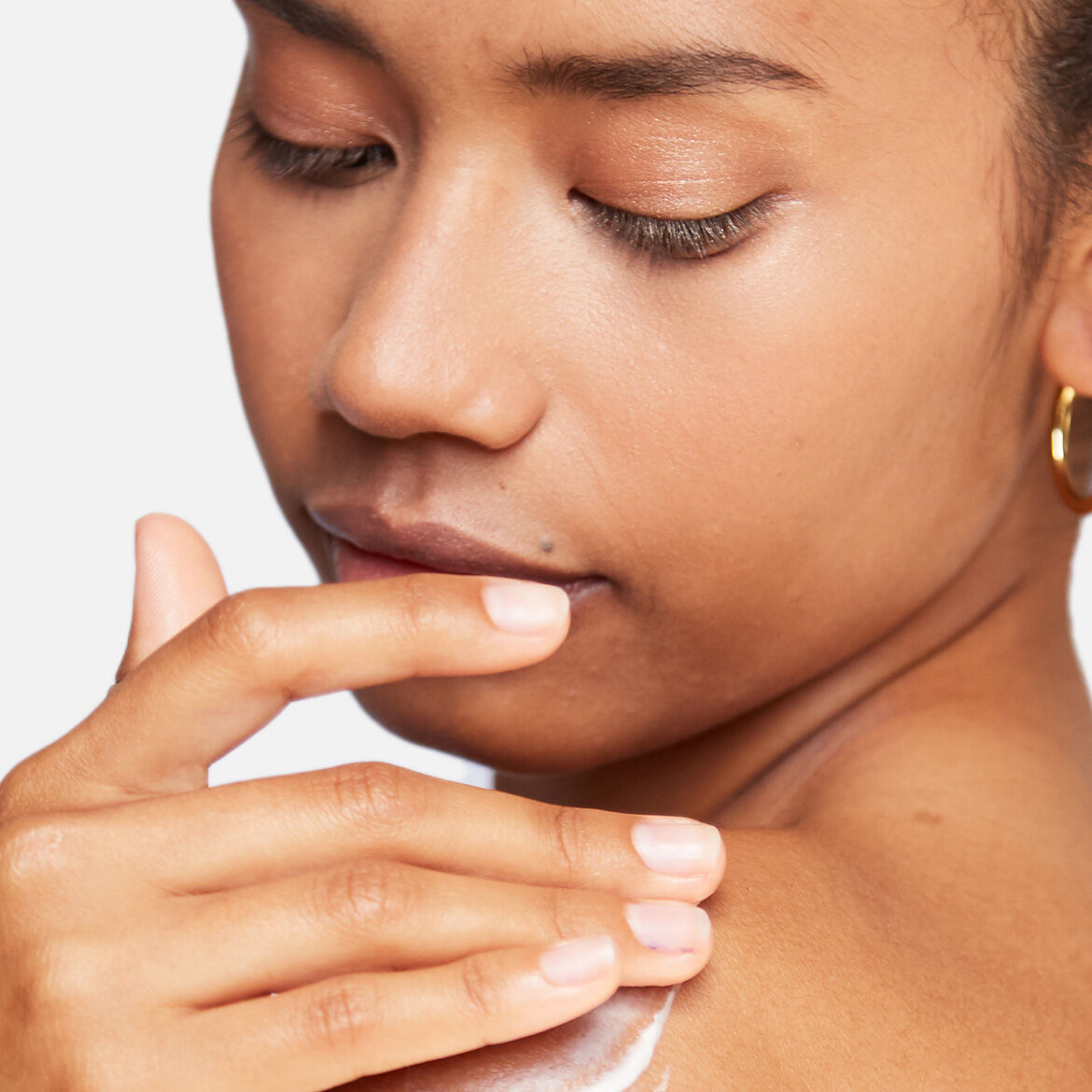
What Are the Must-Have Ingredients for Monsoon Moisturizer
While the air feels damp, humidity doesn’t guarantee hydration; your skin can still become dehydrated, irritated, or breakout-prone. The secret is to select an optimized moisturizer with a composition that will seal in the moisture, yet it should be breathable during humid days. Take the plunge to understand why the ingredients contained in my moisturizer are more important than ever to use during the rainy season.

Key Ingredients to Look for in a Monsoon Moisturizer
During the monsoon, your skin battles increased oil production, environmental pollutants, and microbial growth. A well-formulated moisturizer should therefore:
● Hydrate deeply: Water-attracting humectants restore and maintain moisture.
● Calm and protect: Barrier-repairing and anti-inflammatory agents prevent irritation.
● Balance hydration vs. oil: Lightweight textures that don’t clog pores.
● Defend against environmental stressors: Antioxidants shield from microbes and free radicals.
As opposed to the thick creams, the monsoon moisturizer you choose must strike the right balance and not be very heavy. The best OHV full moisturizer ingredients to absorb are:
● Hyaluronic Acid: intense hydration without heaviness
● Glycerin: a moisture magnet that supports barrier health
● Aloe Vera: soothes inflammation, calms breakout-prone skin
● Niacinamide: regulates sebum, evens tone
● Antioxidants: neutralize environmental damage and pollution
We are going to discuss the benefits of each ingredient and additional ingredients in order to customize formulas against acne, dryness, or aging, below. This fact will make your basic moisturizer ingredients potent yet not overbearing during the wet weather.
Hyaluronic Acid
Hyaluronic acid (HA). Wow, hyaluronic acid can attract one thousand times its weight in water, pulling moisture into the top of the skin. During monsoon, the barrier is usually weak, so HA suffices to bring in the hydration without greasiness and is thus perfect for anyone who uses a gentle cleanser and also those with dry and flaky skin. It’s non‑comedogenic and suits all skin types, including sensitive or acne-prone. Including HA in your moisturizer ensures lasting plumpness and resilience even when humidity levels fluctuate.
Glycerin
Glycerin is a classic, trusted humectant used in moisturizer ingredients for centuries. It attracts moisture from the environment into the skin, helping maintain hydration without clogging pores. As compared to heavy oils, glycerin maintains a healthy barrier and does not give problems to oily skin, combination skin, dry skin, or sensitive skin. It also smoothes rough texture, counters flaking, and improves the lightweight sensation of your moisturizer, which is perfect during humid weather conditions when you want fast and breathable hydration.
Aloe Vera
Aloe vera delivers instant cooling and gentle hydration, making it ideal in the onsoon. It’s packed with polysaccharides and enzymes that calm inflammation, reduce redness, and support irritated skin. Owing to its moisturiser, soft cleanser, it will nourish but will not block the skin, making it wonderful to use after cleansing. Aloe balances the production of sebum as well and deepens moisture preservation, which makes it an ideal addition in the best moisturizer ingredients lists to achieve areathablemoisturizedg skin.
Niacinamide
Niacinamide is a multi-talented skincare superstar. It helps regulate oil production, reduce pore congestion, improve uneven tone, and strengthen your skin barrier. Niacinamide moisturizers of a lightweight formulation are also considered the best moisturizer to use on an oily skin type, especially during the monsoon when the humidity and sebaceous compounds encourage breakouts. It also calms down allergic or fungal inflammation, and as such, it is harmless to fragile or sensitive persons.
Antioxidants
Including antioxidants like Vitamin C, Vitamin E, green tea extract, or resveratrol helps neutralize free radicals from pollution and moisture-laden heat waves. These environmental triggers can accelerate aging and pigmentation during the monsoon. An antioxidant-containing moisturizer also acts to repair the skin and improve the barrier defense. Radiance and resilience can also be boosted with light-as-you-can-get antioxidant serums beneath your moisturizer.
Additional Ingredients for Specific Skin Concerns
Beyond hydration, you may have skin-specific needs. Here are extra ingredients to address those:
Tea Tree Oil for Acne-Prone Skin
Tea tree oil has natural antimicrobial and anti-inflammatory properties, which help reduce P. acnes bacteria and soothe acne patches. It incorporates lightweight mixtures in tiny amounts to balance aggressiveness and hydration that do not cause irritation. Try non-comedogenic moisturizing products that contain about 0.5-1 percent of tea tree extract to treat acne successfully during monsoons.
Shea Butter for Dry Skin
Shea butter is a deeply nourishing emollient with essential fatty acids and vitamins. It boosts barrier repair and reduces trans-epidermal water loss, perfect for dry skin aggravated by humidity or cleansers. Although it is richer, shea butter crafted in combination with light humectants such as glycerin and HA becomes a moisturizer texture that is suitable to relieve and please dryness when applied in the monsoon.
Argan Oil for Anti-Aging
Argan oil is rich in omega fatty acids, Vitamin E, and antioxidants, providing barrier repair, antioxidant action, and improving skin elasticity. The support of an anti-aging without heaviness, which functions well in dewiness and smoothness, can be attained through a drop or two of a lightweight moisturizer. Apply it together with niacinamide and HA to have a young, refreshed, and hydrated look even during dry weather.
How to Choose the Right Monsoon Moisturizer for Your Skin Type
Here's your foolproof skin-type guide to selecting ideal moisturizer ingredients:
Combination Skin
Combination skin needs a balance, tackling the oily T-zone and dry cheeks. Look for lightweight, gel-cream moisturizers with hyaluronic acid, niacinamide, and trace shea butter for targeted hydration. Avoid heavy oils that clog pores, but include barrier-supporting humectants. Cetaphil Daily Hydrating Lotion offers cushioning hydration with hyaluronic acid and niacinamide, perfect for hybrid skin types.
Oily Skin
Oily skin benefits most from oil-free, non-comedogenic moisturizers with humectants alone. Prioritize hyaluronic acid, glycerin, and niacinamide, and include gentle acne-fighting agents like green tea or tea tree. Also cleansers with SA such as the Cetaphil gentle exfoliating SA cleanser which help in the removal of excess oils. . The hydrating formulas of Cetaphil are oil-free, making them the perfect moisturizers during monsoons when the skin tends to be very oily.
Sensitive Skin
Sensitive skin needs soothing, non-irritating, fragrance-free moisturizers. Choose formulas with aloe vera, niacinamide, hyaluronic acid, and, if needed, mild shea butter. Do not use fragrance, essential oils, strong preservatives, or acids. A hydrating lotion composed of a mix bundle that provides relief to sensitive skin and is compatible with the gentlest cleanser that repeatedly attains soothing care during monsoons is Cetaphil Gentle Hydrating Lotion.
Conclusion
Selecting a monsoon moisturizer is not all about being hydrated, but about hydration that strengthens, shields, and protects. With the influence of such important ingredients as hyaluronic acid, glycerin, aloe vera, niacinamide, and antioxidants, you can guarantee trustworthy hydration, barrier protection, and glow under high-humidity conditions. Customize your concoction to target specific skin woes with such additions as tea tree oil to combat acne, shea butter to treat dry areas, or argan oil to combat signs of aging to make a custom skin care powerhouse. Have faith in dermatologist-recommended formulas by Cetaphil, which only include clean, safe ingredients in all skin types, and don't forget to use the Cetaphil AI Skin Analysis Tool that provides you with the most individualized advice. When you have the correct formula, then you are sailing through the monsoon with ease, vision, and radiant health.
FAQs
What ingredients should I avoid in a monsoon moisturizer?
Avoid greasy oils on the face, such as mineral oil and lanolin, which can block pores. Avoid creams that contain ingredients that dry up the skin, in as alcohol. Comedogenic compounds or fragrances, as well as parabens too should be avoided, in particular, when we have sensitive or acne-prone skin under humid conditions of monsoons.
How often should I apply a moisturizer in the monsoon?
Use moisturizer twice a day, in the morning after cleansing and at night every day. Should you have the problem of tight or dry skin after going out and playing in the rain, replenishing your outdoor skin works. One would require a non-comedogenic, non-greasy, lightweight formula that can guarantee hydration during the humidity experienced during the monsoons.
Can I use the same moisturizer for the face and body during the monsoon?
It is advisable to apply different moisturizers. The facial skin is more sensitive and has to be treated with light formulas that are non-bogging. Moisturisers for the body are thicker and can clog the pores of the face. To maintain the perfect skin balance, it is advisable to apply a more specific moisturizer to the face as the weather is quite humid in the monsoon.
Should men use a different type of monsoon moisturizer?
Yes, men can also use moisturizers designed to suit their skin, which is usually thicker and oilier. Non-greasy, lightweight ones with shine control, control hydrate, but do not clog pores. Find a product containing niacinamide or hyaluronic acid to tackle the monsoon-related issues, such as acne or irritation.
How can I tell if my current moisturizer is suitable for monsoon?
Check the texture. Ideally, the monsoon moisturizers must be non-greasy and fast-absorbing, and light. Make sure that it is marked non-comedogenic, and it fits the humid weather. You need to change once your skin becomes heavy, greasy, or breaks out. Apply moisturizers that are recommended by dermatologists, such as Cetaphil Hydrating Moisturizer.







.png?sw=450&sh=450&sm=fit&q=85)






